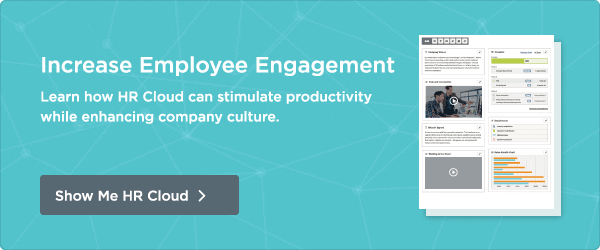
 Try
Out
Our
Try
Out
OurEmployee Engagement Software For Free

It’s been said that employees don’t leave jobs, they leave their managers. And when employees don’t have a relationship, it’s much easier for them to walk out the door. There’s really no reason to stay. So how can HR professionals encourage meaningful relationships in the workplace?
The Emotional Connection
Engagement equals connection. Human connection. Emotional connection. Employees want a relationship with their team, their manager, and want to feel connected to the organization through the work they do. When employees are connected, they’re engaged.
So, how do we define “engagement?” In an October 2013 article for Human Resource Executive, Gallup Education defined it as, “those who are enthusiastic about their work.” Non-engaged employees were defined as, “those who are satisfied with their workplaces, but not emotionally connected to them.” And actively disengaged employees were defined as, “those who are emotionally disconnected from their work and workplace.”1 Based on these definitions, we find that engagement is really rooted in emotional connection.
Get Connected
To connect with someone, you need to know them first. Many times, we think we know each other. But do you really know what motivates your team? What drives them to push their limits and reach the goals you’ve set for them? What do they care about? You probably have regular discussions with your team, but are you taking time to really know them?
At Zappos (an online retail company), they work on developing employee relationships to increase engagement. They understand that an engaged workforce leads to better communication and increased productivity. To encourage employees to interact with each other in a meaningful way, Zappos created the Grant-a-Wish Program. In the program, employees are able to submit and grant wishes for themselves and other employees. For example, maybe your co-worker wants to learn to speak Spanish or play the guitar—you can submit a wish and someone else can grant it. The theory behind the program is that it promotes team spirit. People get to really know each other. They learn about interests, dreams, and goals. This program provides that opportunity, in a fun and engaging way. In fact, Zappos strongly believes in that emotional connection and has made “building a positive team and family spirit” one of their core values.
Create the Relationship
“Employees are a lot like plants: give them a place in the sun, just enough attention, but not too much, and room to grow and they'll thrive. Keep them in the dark, hover over them too much, or neglect them outright, and they'll fail to produce.”2
Is your door open or closed? You’ve heard of an open door policy, but frankly, many say they follow it but don’t. The office door may be physically open, but are you talking? Are you inviting others to stop in and say hello, to ask questions, to just catch up about their day? Open your door and invite people in.
Tell the story. You’ve got a lot of great things happening on your team. Your organization is thriving. Creativity is through the roof with new products on the horizon. Encourage your employees to tell the story of success. Showcase the teamwork and products that are driving your business to the next level.
At “America’s leading design firm,” IDEO, they have turned their lobbies into storytelling entrances. Each office lobby displays products or ideas that IDEO employees are proud of and what to share with others. When visitors or clients stop by the office, they get a real sense of what the company does and what the culture is like.
The lobby at 660 High Street is our best storytelling entrance. There’s the sleek soapbox car that won the intensively competitive local race called the Sand Hill Challenge. On each side of the broad lobby, shelves overflow with prototypes and final products—everything from the Heartstream defibrillator to the Palm V, Crest Neat Squeeze, Pepsi Twist n’ Go cup, and the Softbook electronic book. Nothing is placed behind glass—it’s all there for us to handle and show visitors the nuances of innovation and design.3
Telling the story connects your employees to the business. It allows them to showcase their success as a team. Building relationships is about connecting on a higher level than just work output. It means, connecting with the team, with the culture, with the organization.
Storytelling is best when it comes from the heart. We encourage studios to display their best work, but we don’t bog down the process with corporate rules. There’s no official “storytelling” policy. Bureaucracy would just kill the inspiration. The best storytelling is when the team itself is proud and wants the world to know what it’s accomplished. Morale has never been higher.3
Engage
So, find that emotional connection. Engage your employees. Know them. Understand them. Build relationships and watch your organization thrive.
Sources:
1. Shadovitz, David. "Engaging College-Educated Workers."Human Resource Executive. OCT 2013: 11. Print.
2. Cornett, J.E. "How to Build a Stronger Relationship With Your Employees." Houston Chronicle. (2013): n. page.
3. Kelley, Tom, and Jonathan Littman. The Art of Innovation. London: Profile Books LTD, 2004. 140. Print.
Keep Reading
Benefits of Having a Company Intranet
Company intranets have been a part of corporate life since the mid-'90s. But in the last
Top 8 Workvivo Alternatives for 2024
Meta recently announced that it is shutting down its employee communications tool







